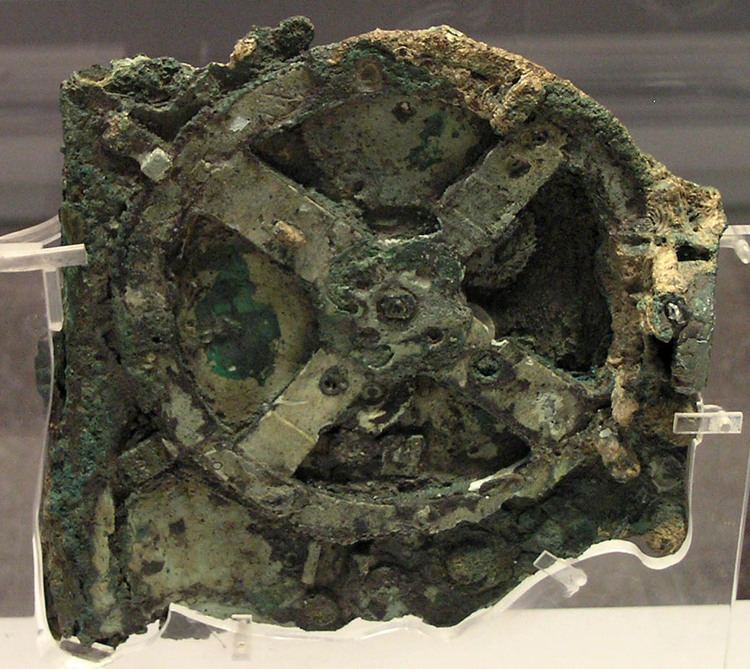Postal code 801 00 Website www.antikythira.gr Area code 27360 | Time zone EET (UTC+2) Vehicle registration Z Area 20.43 km² | |
 | ||
The antikythera mechanism 2d
Antikythera or Anticythera (/ˌæntɪkɪˈθɪərə/, /ˌæntɪsɪˈθɪərə/; Ancient Greek: Ἀντικύθηρα Greek: Αντικύθηρα, [andiˈciθira], literally "opposite Kythera") is a Greek island lying on the edge of the Aegean Sea, between Crete and Peloponnese. Since the 2011 local government reform it is part of the municipality of Kythera island.
Contents
- The antikythera mechanism 2d
- Map of Antikythera Antikithira Greece
- Life in kythera and antikythera greece faces and places
- History
- Fauna
- Notable people
- References
Map of Antikythera, Antikithira, Greece
Antikythera may also refer to the Antikythera Strait, through which modified Mediterranean water enters the Sea of Crete.
Its land area is 20.43 square kilometres (7.89 square miles), and it lies 38 kilometres (24 miles) south-east of Kythira. It is the most distant part of the Attica region from its heart in the Athens metropolitan area. It is lozenge-shaped, 10.5 km (6.5 mi) NNW to SSE by 3.4 km (2.1 mi) ENE to WSW. It is notable for being the location of the discovery of the Antikythera mechanism and for the historical Antikythera wreck.
Its main settlement and port is Potamós (pop. 34 inhabitants in the 2011 census). The only other settlements are Galanianá (pop. 15), and Charchalianá (pop. 19). Antikythera is sporadically visited by the LANE Lines ferry Vitsentzos Kornaros on its route between Piraeus (Athens) and Kissamos-Kastelli on Crete.
Life in kythera and antikythera greece faces and places
History
The earliest known inhabitants (5th or 4th millennium BC) were likely seasonal hunters who traveled there to exploit the presence of migratory birds. The population of the island then changed frequently as it was settled and abandoned several times, including a period of significant influence by Cretan culture during the Bronze Age. In antiquity, the island of Antikythera was known as Aigila or Ogylos.
Between the 4th and 1st centuries BC, it was used as a base by a group of Cilician pirates until their destruction by Pompey the Great. Their fort can still be seen atop a cliff to the northeast of the island. The archaeology of the island has been thoroughly surveyed and the data made openly available for further study.
Antikythera is most famous for being the location of the 1900 discovery of the Antikythera wreck, from which the Antikythera Ephebe and Antikythera Mechanism were recovered. The Antikythera mechanism is an ancient mechanical calculator (sometimes described as the first mechanical computer) designed to calculate astronomical positions which has been dated to about 205 BC. Technological artifacts of similar complexity did not appear until a thousand years later.
Fauna
Antikythera is a very important stop-over site for migratory birds during their seasonal movements, due to its geographical position and certain features (a longitudinal island, with a north-south direction and very low human impact). Furthermore, the island hosts the largest breeding colony of Eleonora's falcon (Falco eleonorae) in the world. The importance of Antikythira for studying bird migration led to the creation of Antikythera Bird Observatory (A.B.O) by the Hellenic Ornithological Society.
